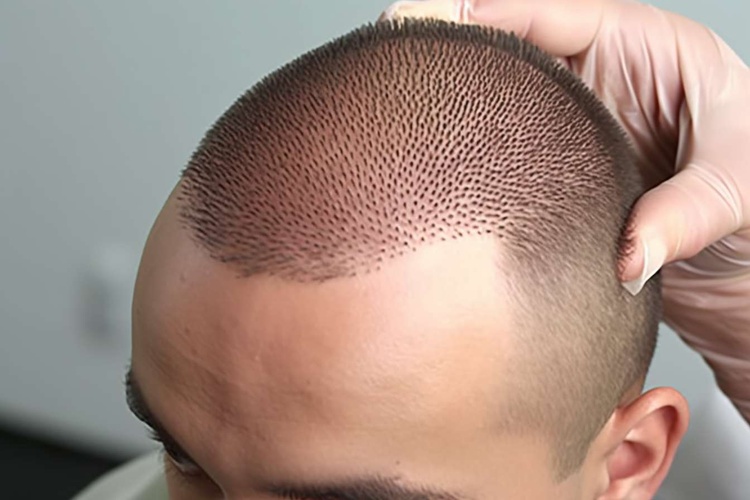The Science and Art of Hair Restoration: Understanding Your Options
Hair loss can be a distressing experience for many individuals, affecting self-esteem and confidence. Fortunately, the field of hair restoration has made significant advancements in recent years, offering a variety of solutions for those seeking to regain their luscious locks. This article explores the world of hair restoration, from at-home treatments to professional procedures, helping you understand the options available and what to expect on your journey to fuller hair.

What are the different types of hair restoration products and how are they applied?
Hair restoration products come in various forms, each with its unique application method. Topical solutions, such as minoxidil, are applied directly to the scalp, typically twice daily. These liquid or foam formulations work by stimulating hair follicles and increasing blood flow to the scalp. Oral medications, like finasteride, are taken daily in pill form and work by blocking the hormone responsible for hair loss in men.
Shampoos and serums designed for hair restoration are used as part of your regular hair care routine. These products often contain ingredients that nourish the scalp and strengthen existing hair. They are applied during washing or as leave-in treatments, depending on the specific product instructions.
For more advanced options, there are also scalp micropigmentation techniques, which involve tattooing pigment into the scalp to create the appearance of a fuller head of hair. This is typically performed by a trained professional over several sessions.
What are common ingredients people look for in hair restoration shampoos and serums?
When searching for effective hair restoration products, consumers often look for specific ingredients known for their potential hair-boosting properties. Some common ingredients include:
-
Biotin: A B-vitamin that supports healthy hair growth and strengthens existing strands.
-
Saw Palmetto: An herb believed to block DHT, a hormone linked to hair loss.
-
Ketoconazole: An antifungal ingredient that may help reduce inflammation on the scalp.
-
Caffeine: Stimulates hair follicles and may promote hair growth.
-
Niacin (Vitamin B3): Improves blood circulation to the scalp.
-
Peptides: Amino acid chains that can stimulate hair follicles and promote growth.
-
Essential oils: Such as peppermint or rosemary oil, which may improve scalp health.
These ingredients are often found in various combinations in hair restoration shampoos and serums, each claiming to address different aspects of hair loss and promote regrowth.
What factors may affect the outcome of hair restoration products?
The effectiveness of hair restoration products can vary significantly from person to person due to several factors:
-
Cause of hair loss: Whether it’s genetic, hormonal, or due to external factors like stress or medication.
-
Age and duration of hair loss: Generally, earlier intervention yields better results.
-
Consistency of use: Most products require regular, long-term application for optimal results.
-
Overall health: Nutrition, stress levels, and underlying medical conditions can impact hair growth.
-
Type of hair loss: Products may work differently for pattern baldness versus general thinning.
-
Genetics: Some individuals may be more responsive to certain treatments than others.
-
Quality and concentration of ingredients: Higher-quality products with clinically proven ingredients tend to be more effective.
-
Combination of treatments: Using multiple approaches simultaneously may yield better results.
Understanding these factors can help set realistic expectations and guide you in choosing the most appropriate hair restoration approach for your specific situation.
How do at-home hair restoration products differ from professional treatments?
At-home hair restoration products and professional treatments differ in several key aspects:
-
Strength and formulation: Professional treatments often use stronger, medical-grade ingredients that may not be available over the counter.
-
Application method: At-home products are designed for self-application, while professional treatments may require specialized equipment or techniques.
-
Cost: Professional treatments are generally more expensive but may offer more dramatic results.
-
Customization: Professional treatments can be tailored to an individual’s specific needs and hair loss pattern.
-
Monitoring: Professional treatments often include regular check-ups and adjustments as needed.
-
Duration of results: Some professional treatments, like hair transplants, can offer permanent results, while at-home products typically require ongoing use.
-
Side effects: Professional treatments may have a higher risk of side effects but are monitored by medical professionals.
-
Time commitment: At-home products are often more convenient, while professional treatments may require multiple clinic visits.
| Treatment Type | Provider | Key Features | Cost Estimation |
|---|---|---|---|
| At-home Minoxidil | Rogaine | Topical solution, twice daily application | $20-$50 per month |
| Oral Medication | Propecia (finasteride) | Daily pill, prescription required | $30-$80 per month |
| Hair Transplant | Bosley | Surgical procedure, permanent results | $4,000-$15,000 per session |
| Scalp Micropigmentation | Scalp Micro USA | Non-surgical, creates appearance of fuller hair | $1,500-$4,000 total |
| Laser Therapy | HairMax | At-home laser device, regular use required | $200-$800 one-time cost |
Prices, rates, or cost estimates mentioned in this article are based on the latest available information but may change over time. Independent research is advised before making financial decisions.
Why are patience and consistency important when using hair restoration products?
Patience and consistency are crucial when using hair restoration products for several reasons:
-
Hair growth cycle: Hair grows in cycles, and it can take several months to see noticeable results.
-
Cumulative effects: Many products work by gradually improving scalp health and stimulating follicles over time.
-
Preventing regression: Stopping treatment can often lead to a reversal of any gains made.
-
Building a routine: Consistent use helps incorporate the treatment into your daily life, ensuring you don’t miss applications.
-
Accurate assessment: Long-term use allows for a fair evaluation of the product’s effectiveness for your specific case.
-
Hormonal changes: Some treatments work by altering hormone levels, which takes time to show visible effects.
-
Scalp adaptation: Your scalp may need time to adjust to new products, and initial irritation may subside with continued use.
Understanding that hair restoration is a gradual process can help manage expectations and encourage users to stick with their chosen treatment long enough to see potential benefits.
In conclusion, hair restoration offers a range of options for those looking to address hair loss, from over-the-counter products to professional treatments. By understanding the types of products available, their ingredients, and the factors that influence their effectiveness, individuals can make informed decisions about their hair restoration journey. Remember that patience and consistency are key, and consulting with a hair loss specialist can provide personalized guidance for optimal results.
This article is for informational purposes only and should not be considered medical advice. Please consult a qualified healthcare professional for personalized guidance and treatment.




